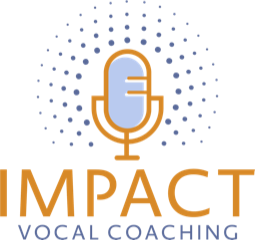How to Protect Your Voice On ZOOM
STEP 1: DO THIS SHORT WARM-UP ROUTINE BEFORE YOU START YOUR MEETING:
Step I: Do Head & Neck Rolls to release neck tension
Step 2: Do a Breath Check– Make sure to take a deep belly/diaphragmatic breaths to fire up support for your voice.
Step 3: Check Your Posture– Have your head balanced evenly on your spine, have your sitting posture upright from the base of your spine.
Step 4: Warm-up your face with lion face (stretch wide)/ lemon face (scrunch small), then do lip and tongue trills (“brrr…”), and some gentle jaw openers.
STEP2: SET UP YOUR TECH FOR SUCCESS:
Check that your audio level is strong so you don’t have to yell/project your voice. Use an external microphone & headphones for best sound.
Set up your monitor or phone at eye level for your best posture.
Have a large water bottle nearby and drink in between and during meetings when needed. Drink at least 8 cups of H20 per day/64 ounces.
STEP 3: USE THESE BEST SPEECH PRACTICES DURING YOUR MEETING:
Speak slow enough for listener comprehension: Ideal Rate of Speech is between 140-160 words per minute for conversational public speaking.
Enunciate your words: Speak clearly by opening your mouth and releasing your lower jaw. Use the 1-2 finger space guide when you speak to check that you are opening up your mouth enough.
Engage your eyes as well as your mouth when you speak for clearer speech, more animated delivery, and a brighter vocal tone.
Speak at your ideal vocal “neutral” pitch, not too low that you experience glottal fry (gravelly voice), or too high that you feel strain, but a medium/neutral vocal tone for optimal resonance that requires the least effort.
RED FLAGS & GOOD VOCAL HEALTH PRACTICES:
Listen to your voice for these signs of fatigue: vocal strain, hoarseness, dry throat, fullness of throat, excessive throat clearing. These are RED FLAG signs that your voice needs rest.
Think of your voice like a battery, full at the beginning of each day and in need of a recharge by the end.
Pace your voice and schedule breaks between meetings, use the warm-up above before your first meeting, continually hydrate your voice, and speak “on breath” with enough breath support.
Get adequate nightly sleep, daily exercise, and a healthy diet for a healthy voice. Limit irritants that can dehydrate your voice like coffee, alcohol, citrus, or antihistamines.
If you experience ongoing vocal issues like hoarseness, acute pain when you speak, or constantly lose your voice, you may want to consult a medical professional such as a Medical Speech Pathologist or an Ear, Nose & Throat Specialist.
If you want to improve and protect your voice, consider training with a Voice Coach or join Coach Jessica’s Public Speaking Course, IMPACT: The Essential Public Speaking Course for your Online and In person Presentations HERE
